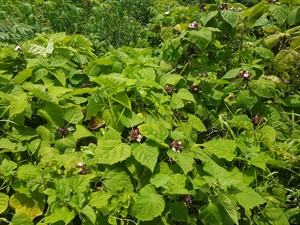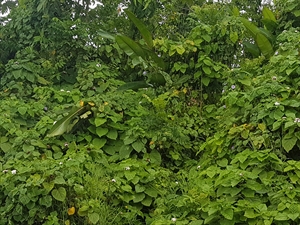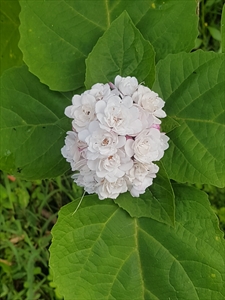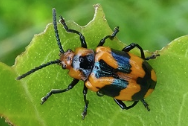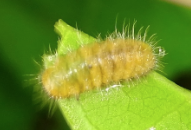- Widespread. Asia, North, South and Central America, Caribbean, Oceania. In many Pacific islands.
- Invasive, grows in shade and full sunlight, in disturbed places and fertile (Oceanic island) soils. Forms dense stands from root suckers in pastures, plantations, along streams, and at forest edges.
- Perennial shrub up to 3 m tall. Stems and branches four-sided with fine hairs. Leaves, 6-20 cm long, opposite, heart-shaped, soft short hairs, wavy margins and sharp tips. Disagreeable smell when crushed. Flowers, 2-3 cm across, white to pink, double, sterile, in dense cluster at tops of stems. Fragrant in the evening.
- Spread: root suckers; trade in ornamentals.
- Biosecurity: high risk of introduction. Available on internet.
- Biocontrol: potential with chrysomelid beetle, and fungal rust. Need to check identification of weed in Pacific.
- Cultural control: hand weeding, digging, slashing, cultivation (probably not successful in wet soil).
- Chemical control (from literature): (i) foliar (picloram; triclopyr; 2,4-D; metsulfuorn-methyl; picloram + triclopyr; picloram + 2,4-D; dicamba + 2,4-D); (ii) cut-stump (same herbicides); (iii) soil (fluroxypyr). In Fiji, glyphosate or metsulfuron-methyl.
Pacific Pests, Pathogens and Weeds - Online edition
Pacific Pests, Pathogens, Weeds & Pesticides
Honolulu rose (443)
Honolulu rose; it is also known as Spanish jasmine. CABI prefers the name Chinese glory.
Clerodendrum chinense. It was previously known as Clerodendrum philippinum, and Clerodendrum fragrans. It is a member of the Lamiaceae.
AUTHORS Grahame Jackson & Aradhana Deesh
Information from Waterhouse DF (1993) Clerodendrum chinense (Osbeck) Mabberley. Biological control: Pacific prospects - Supplement 2. ACIAR Monograph No. 20. pp.72-93; and Pacific Island Ecosystems at Risk (2013) Clerodendrum chinense. (http://www.hear.org/pier/species/clerodendrum_chinense.htm); and CABI (2019) Clerodendrum chinense (Chinese glory bower). Invasive Species Compendium. (https://www.cabi.org/isc/datasheet/113371); and from Saengyot S, Napompeth B (2008) Biological control of Honolulu rose, Clerodendrum chinense (Osbeck) Mabberley (Lamiaceae), in Thailand, p.145-151. In: Academic Frontier Research Project (Phase II). Academic Frontier Research Center, Tokyo University of Agriculture. Tokyo, Japan. Photos 5-7 Banpot Napompeth, Kasetsart University, Bangkok, Thailand.
Produced with support from the Australian Centre for International Agricultural Research under project HORT/2016/185: Responding to emerging pest and disease threats to horticulture in the Pacific islands, implemented by the University of Queensland, in association with the Pacific Community and Koronivia Research Station, Ministry of Agriculture, Fiji.
